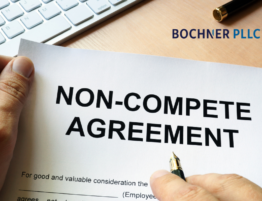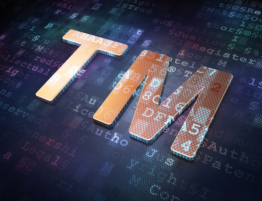
What Are Copyrights?
Copyrights are a type of intellectual property designed to protect original works of authorship. This includes original literary, musical, dramatic, graphic, sculptural, audio-visual, architectural, photographic, video-graphic, web design, and audio works.
Copyright protects work that is in a fixed and tangible medium like a book, digital recording, or photograph. It gives the creator of a work full control over how their work is expressed for a limited time. This means the creator can control who is allowed to print their book or which manufacturer can use their original illustration.
It is very important for creative people, businesses, and organizations to understand the concept of copyright. In this post, I’ll share some basic information about copyright law and how it can be used to protect your intellectual property.
Where do copyright protections come from?
Copyright protections are provided by the government of the United States under the Copyright Act of 1976, codified in Title 17 of the United States Code. Congress has the power to grant copyright protection under Article 1, Section 8, Clause 8 of the constitution, which is commonly known as the “Copyright Clause”.
This clause was added to the constitution so Congress has the power to “To promote the Progress of Science and useful Arts, by securing for limited Times to Authors and Inventors the exclusive Right to their respective Writings and Discoveries.”
Essentially, copyright was designed to reward the creators of intellectual property for their contributions to society. It encourages them to share their creations with the rest society while still retaining some control over their work for a limited time.
Copyright law only protects the expression of an idea and not the idea itself. That means copyright will determine who can print a book, but it will not protect all of the ideas, procedures, processes, concepts, methods, or discoveries contained within that book.
To copyright your work, it must be in a tangible form like a book, recorded song, painting, or written play. For example, an original melody that you have in your head is not copyrighted until it is recorded. You will then have some rights over how the recording of your melody is reproduced. In simple terms, copyright will protect the material against:
• Being reproduced in a physical form
• Having highly derivative works created from it
• Being displayed publicly
• Being performed publicly
How copyright works with other forms of intellectual property
Copyright often works in parallel with other forms of intellectual property. For instance, a logo would be registered as a trademark. Copyright protections could also be applied to the reproductions of that trademark, limiting who can print t-shirts or boxes featuring it.
It is important to note that there are differences in the amount of compensation that can be obtained when someone infringes on a copyright or another form of intellectual property. For example, if someone infringes on your copyright, your compensation is limited to the profits that you can prove you lost due to the infringement. However, if you have a federally registered trademark, there are also minimum damages and attorney fees that can apply to each infringement.
Unlike some other forms of intellectual property, copyright is granted the moment you put pen to paper. So, the moment you create an original drawing, piece of music, or artwork, it is protected.
Another key difference to other forms of intellectual property is that copyrights fall exclusively under federal jurisdiction. This is different to trademarks, which can fall under the state or federal jurisdiction depending on where they are registered.
There are also international copyright protections available under the Berne Convention for the Protection of Literary and Artistic Works (Berne Convention) and the Universal Copyright Convention (UCC). Under these agreements, various countries have agreed to honor registered copyrights from other countries.
Registering a copyright
Copyright is automatically applied to original works of authorship that are in a tangible medium. If another person infringes on your copyright, you can take them to court, where you must prove they are using your copyrighted material without permission.
A copyright owner can improve how well their work is protected by registering it with the federal government. This step is completely optional, but it makes it easier to litigate successfully in a court of law when someone infringes upon your copyright.
For works created on or after January 1, 1978, the term of copyright is the life of the author plus seventy years after the author’s death.
The notion of fair use
There are limitations as to how much control a creator has over their copyrighted material, the most notable being the concept of fair use. Fair use allows other people to use a limited amount of copyrighted material without infringing of a person’s copyright.
Fair use can only show short snippets of a work for specific purposes including parody, the reporting of news, criticism, education, and research. Internet search engines can also use small snippets of original work in order to display search results.
Some of these fair use purposes are available because of free speech provisions. This includes news reporting, criticism, and parody. Others are made available for the betterment of society, like the education and research provisions.
Thank you for reading What Are Copyrights? In the next post, I will share some more details about how copyrights work and how they differ from other forms of intellectual property.
To learn more about copyrights and their use, contact Stanton IP Law Firm today at 813.421.3883 or click here to schedule a free consultation!








